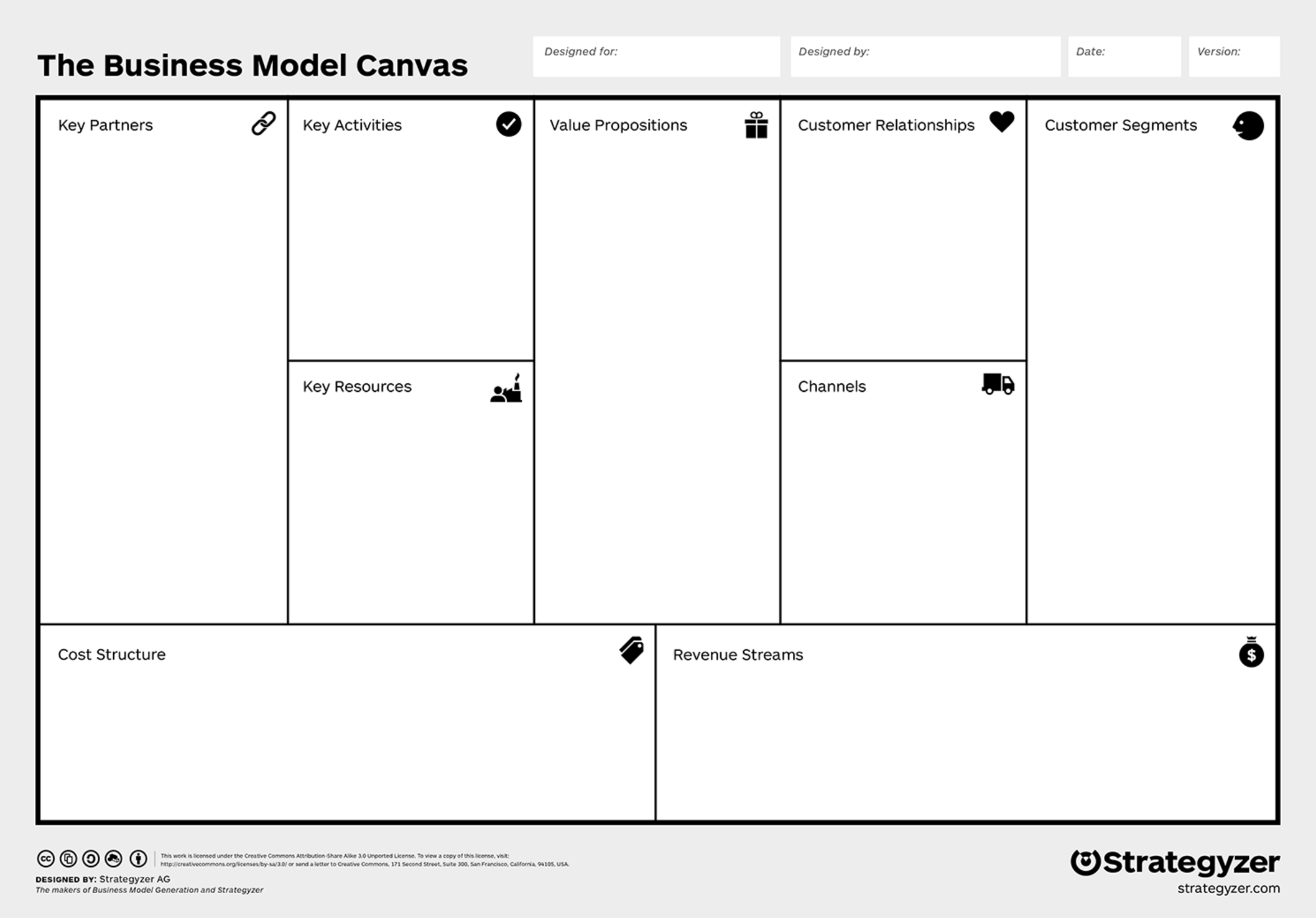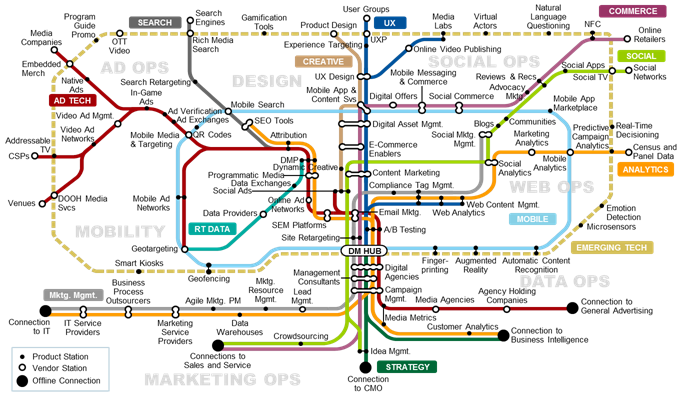As an aspiring entrepreneur (with a small chip on his shoulder) some years back, I visited a local startup incubator and had a sit-down meeting with an advisor to review my business idea. She pulled out a large sheet of paper with nine boxes on it: the business model canvas. With patience and tact, she proceeded to poke a number of holes in my plans for world corporate domination. While a little humbling, it gave me a much wider view of my business and the steps I needed to take to make it thrive.
Fast forward a few years, and I began working with Startups as a client advisor at the Innovation Factory in Hamilton. I made my best effort at poking holes and removing chips off shoulders, as I walked through the business model canvas with clients on a daily basis. While clients were understandably focused and excited about their product, many had not considered some important aspects of their business model. In this article, I will give a quick outline of the business model canvas and do deeper dive into two of the nine boxes.

The Business Model Canvas
Created by Alex Osterwalder, and leading to multiple adaptations (i.e. The Lean Canvas by Ash Muraya and Flourishing Canvas by Antony Upward and the Strongly Sustainable Business Model Group) this business modelling tool helps entrepreneurs identify key elements in their business plan. I recommend printing out a large paper copy of the outline or using the online tools at canvanizer.com.
At the heart of the canvas is the value proposition box, asking what core value you are delivering to your customer. Moving through the right side of the canvas are the boxes which will help you to outline who your customers are (customer segments) how to reach them (channels) and how to keep them happy (customer relationships). Moving through the left side of the canvas are three boxes that deal with resourcing and production: the actions your value proposition requires (key activities), the relationships will you need to build with suppliers and contributors (key partners), and the human, intellectual and physical resources you’ll need to make your product or service (key resources). At the bottom of the canvas are two boxes which outline your cost structure and revenue streams. At the risk of stating the obvious, if you don’t have a handle on your costs, it will be hard to measure success.
In my experience, the canvas is a great “starting point” to understand what areas you have addressed in your business plan, and where the gaps are. It should be something that can be completed in 20- 30 minutes and is definitely meant to be iterative in nature. Below, we’ll look at two key boxes on the customer facing side of the canvas in more detail: the value proposition, and channels, outlining a few ways you can begin to develop your B2B sales strategy by using the tool.
The Value Proposition
A good value proposition is predicated upon knowing your customers. In an earlier post, I outlined the importance of good problem interviews to understand your target market and begin building trust. If you’re struggling to develop an engaging value proposition, consider using the following outline:
- For… [Target Customer]
- Who…. [is experiencing what problem?]
- Our product is…[Our Solution]
- That provides… [Values]
- Unlike… [Our competitors and their weakness]
- We have assembled… [something unique]
I’m sure you could guess the company I’m referring to if I let you fill in the blanks below:
“For Professionals who struggle to stay connected with their peers and find new business opportunities, _________is an online networking platform that provides meaningful, trustworthy connections. Unlike other large networking sites like Facebook and Instagram that are directed at personal and social connections, we have assembled networking and training tools to service almost 500 million people in the professional sphere.” (If you couldn’t guess the company… message me on LinkedIn!)
For your B2B solution, a clear value proposition that identifies your target customer also helps give you a jumpstart on qualifying your leads. For instance, let’s look at the title on the FreshBooks homepage: “FreshBooks Cloud Accounting: Small Business Accounting Software That Makes Billing Painless.” Right away I know that If I’m a fortune 500 company FreshBooks is not for me. If I’m trying to complete my personal tax return, again, probably not a fit. Clarifying businesses you are not serving can save a lot of wasted time, better spent following up on real leads. To think about: does your value proposition identify a target customer and explain the value that it brings to them?
Channels
Having refined your value proposition, you should already have a growing understanding of your target customer. B2B sales is a trickier playing field in this regard, as you can create a customer persona around the kind of organization you are targeting, as well as the right person within that organization. If you already have sales, just think of your “best customer;” where you met them, what were the steps in their buying journey, and whether it’s possible to duplicate that path. With a plentitude of channels where customers can be engaged, spend some time finding out where they “live” and meet them there.

The MaRS Entrepreneur’s Toolkit outlines some basic steps to identify where your customer is on their buying journey and how to engage them along the path. This can be done by researching where they are at in the buying process: problem recognition, information search, comparing alternatives, purchase decision or post purchase evaluation. Based on what is on their mind during each one of these steps, a good channel strategy can be developed that will align best with their behaviours. Another way to choose a particular channel strategy when thinking about media is to look at the following criteria:
- Does the media channel help you to reach, engage, activate or nurture your target market?
- What are the costs involved?
- Is this a mass-market or targeting approach?
- Does this medium allow for message complexity?
- Does your target find this media credible?
- Can you measure the ROI through this medium?
To think about: Have you compared a channel strategy looking through a comparative matrix?
Concluding Thoughts
I like to think of every box on the business model canvas as having a little footnote in the corner of it. In your channels box, you might list out three channel strategies in point form, but eventually, you will have the “footnoted” data to back up your approach. Remember though that this business model canvas is simply a tool and not an end in itself. You may have outlined a “model” but the next step, the ultimate challenge, is to break out of the box and execute on the model and plans you have made!
Want more valuable tips? Check out our Twitter feed.

